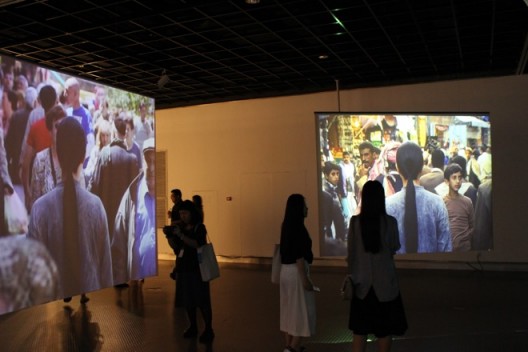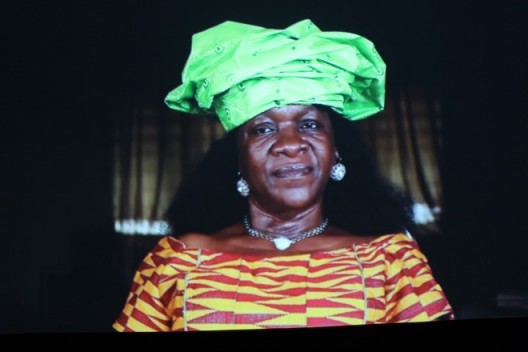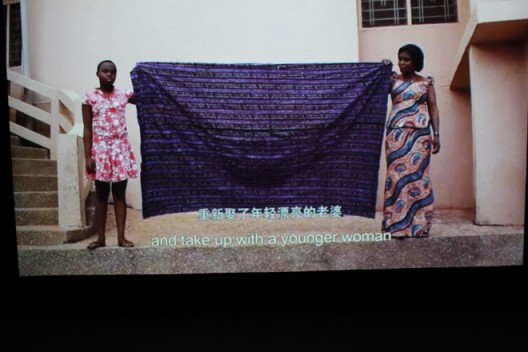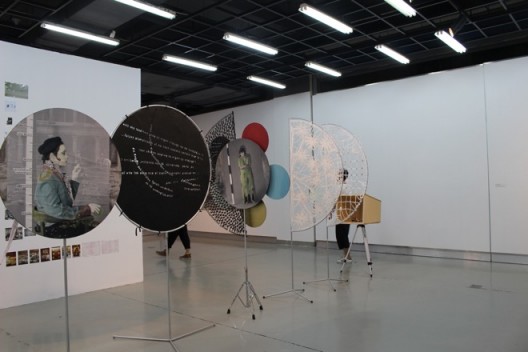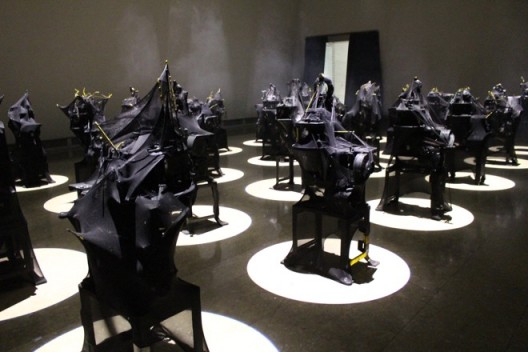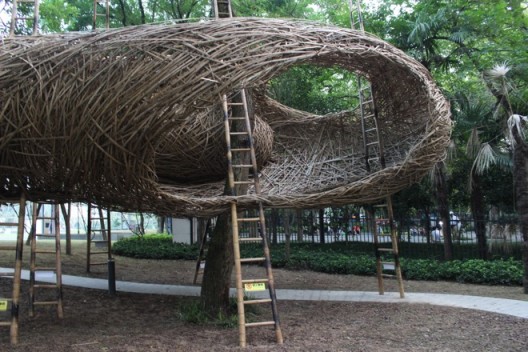by Julie Chun
“Weaving and We: the 2nd Hangzhou Triennial of Fiber Art”
Zhejiang Museum of Art and other sites, Hangzhou. Aug 25–Oct 25, 2016
Curators: Assadour Markarov, Liu Xiao, Xu Jia
One of the most noticeable features of the 2nd Hangzhou Triennial of Fiber Art is the expanded definition of what constitutes “fiber.” The term extended well beyond the isolating elements of thread, textile, and fabric that tends to confine fiber-based art as “craft” to encompass plastic bags, panty hose, coconut skin, bamboo, and even human hair. If the visual offerings in the first Triennial in 2013 had attempted to chart the art historical course of fiber art’s momentous emergence in Hangzhou as a new vector for contemporary art in China, this year’s iteration affirms the prominent position of woven materiality as an international medium also relevant for artistic discourse.
Although the woven soft sculptures by the Bulgarian artist Maryn Varbanov (1932-89), who established and taught at the Institute of Art Tapestry in Hangzhou from 1986 to 1989, were absent this year, his legacy was nonetheless relayed through two of his students—Shi Hui, the Triennial’s Artistic Director, and Assadour Makarov who, along with Liu Xiao and Xu Jia, curated the current triennial. With sixty artists and artist collectives from around the world, the Fiber Art Triennial was loosely organized under the theme “Weaving & We.” While the lushly photo-illustrated 530 page exhibition catalogue attempted to categorize each artwork according to four corresponding sub-themes “Needles & Proverbs,” “Body & Identity,” “Scene & Phenomenon,” and “Weaving & Form,” the reality was that most of the works were dispersed for general contemplation at the main venue of the Zhejiang Art Museum. Redeemably, many of the individual pieces were able to fluidly overstep expository boundaries to entice and engage. Kimsooja’s iconic “A Needle Woman” (2005), mounted on six large drop-down screens in a circular format, literally envelopes the viewer in an enclosure to reinforce the metaphor of a stream of people passing like a thread through the eye of a needle. Interrogating issues of materiality/immateriality, mobility/immobility, action/non-action, as well as the displacement of time, “A Needle Woman” could well articulate its polyphonic position under any of the triennial’s four sub-thematic classifications.
Another addition to the second triennial is the inclusion of moving images as well as architectural constructs fabricated from organic and inorganic materials that are installed both inside and outside of the museum. Though they are disparate in form and content, the unifying basis of these works is the pliable narrative each woven material seeks to articulate. “Currency of Ntoma,” (2012) by Godfried Donkor unravels a tale of de-colonial intrigue by tracing the context of African patterned cloth (ntoma) produced in the Netherlands during the mid-19th century and exported to West Africa for consumption. The two-channel video, with each channel placed directly opposite the other with separate sequences, forms a corresponding dialogue. On one side, Donkor’s late mother describes the origins of the names of each brightly patterned fabric, while on the opposite screen an older woman and a young girl proudly hold up the vibrant material. By evoking the historical circumstances of this seemingly “local” textile, Donkor’s video highlights complex relations between colonizer and colonized that were not always unilateral. The design, creation and circulation of cloth as a medium of exchangeable currency between the Netherlands and Ghana offers an insightful reminder of how a mercantile system can create its own hierarchical structures within open and closed societies.
Perhaps no other object more so than textiles eloquently relays the process of its production by drawing our attention to its material. The fabrication of the medium can become its own self-referential subject matter. This quest to locate social significance beneath the visible façade of fabrics led to the inclusion of documentary photographs and videos highlighting the daily lives of textile factory workers. Victor Asiliu’s “Warmth” (2002) depicts perspiring half-dressed men and women at work in the heated compounds of a wool factory in the middle of the frozen wintry landscape of Smilavichy, a small town in Belarus. The compelling visual evidence of forcibly laid-off Taiwanese textile workers in “Factory” (2003) by Chen Chieh-Jen, formerly shown at Shanghai’s 2014 Biennale, made a returning appearance. The series of candid photographs of textile employees in their place of work by Janis Jefferies in “Weaving & We: Hangzhou Textile Factories” (2013) literally and figuratively expose the underside of the labor intensive textile industry.
One of the participating artists, Tali Weinberg, who has been serving as the Executive Director of the Textile Society of America since 2013, comments how she was pleasantly surprised to find fiber art embraced as mainstream art in China, more so than in the US where the genre remains relatively marginalized. Although American textile artists, according to Weinberg, “produce new structures” and “embrace a breadth of materials, processes, and technologies,” their creations are excluded from significant exhibitions and collections at major museums. Despite their close dedication to manual processes than perhaps other formats of contemporary art, textile art is unjustifiably stigmatized as “craft” in the West due to its historical associations. In China, as exemplified by the Hangzhou Triennial, a major contemporary art festival was possible based upon the commonplace material of fiber, indicating the greater potentialities of what may constitute contemporary art.
Although the selection of fiber-based works by Chinese artists was stronger three years ago in “Fiber Visions” with participation by veterans Qiu Zhijie, Lin Tianmiao, Yin Xiuzhen, and Shi Hui & Zhu Wei, the grand master of China’s silk-based art Liang Shaoji was featured this year in a “Parallel Exhibition” dedicated to a retrospective of his selected work from 1990 to 2016 entitled “Cloud above Cloud” in the immense space of the China Academy of Art Museum. The long-standing commitment of Liang’s artistic practice, in which his muse, assistants and collaborators are all silk worms, encompasses the full spectrum of artistic ideals from the obsessive to the romantic. Eschewing the spotlight craved by many in the first generation of Chinese contemporary artists, Liang has adopted a unique lifestyle as a scientist and a hermit. Cloistered on a mountaintop, he spends his days conflating empirical experimentation with philosophical concerns that have become the hallmark of his compositions.
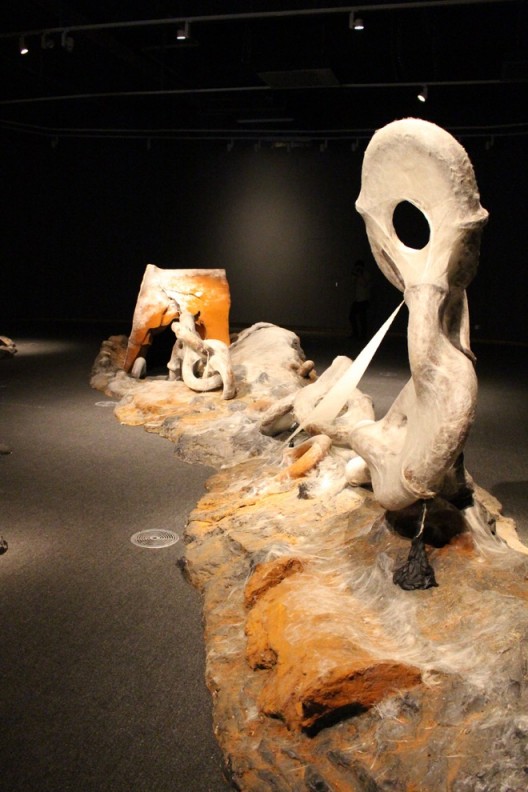
Liang Shaoji, “Destiny”, silk, cocoons, iron plate, iron powder, oil barrel, polyurethane colophony, acrylic and yellow ground, 2012-14. Image courtesy of the artist
In the dark void of the first floor gallery of the China Academy of Art Museum, “Destiny” (2012–14) as heavy industrial debris emerges, shrouded in the quiet, palpable mist of raw silk fiber. Rusted iron chain links as well as fragments of an oil barrel are congealed together by delicate strands of silk fiber for which an army of silkworms had provided their services. In all of Liang’s silk-encased sculptural forms there is heaviness and weightlessness which, when juxtaposed, mysteriously operate in harmony. Perhaps the secret lies in the ethereal quality of the materials, which in their raw state are akin to the complex yet delicate webs of spiders. Yet, unlike the repetitive and structurally sequenced pattern spun by spiders, the spinning effects produced by silk worms are organic and unrestricted as they mark their territories guided only by their natural instincts. According to Liang Shaoji, “The spinning of silkworms resembles traces of clouds. Clouds represent the breath of nature and the vaporized textiles of life.” As such, each individual work in “Cloud Above Clouds” aptly reifies the ethos of its maker, whose personal search for the tenuous hold of life can be intimated in the ephemeral fragility of the silk fiber.
Monumental and eloquently rendered visions at the second Hangzhou Triennial of Fiber Art underscore the tensile and elastic capacity of fiber that can be twisted, knitted, knotted, crocheted, embroidered, sewn, stuffed, stretched, dyed, and even shredded beyond the limits of conventional imagination. Notwithstanding a few inexplicable anomalies placed under “Specific Units”, this edition of the triennial showcases the expanded field of not only fiber art, but more importantly the international reach of contemporary art in Hangzhou, which seems to be still basking in the afterglow of global G20 summit.
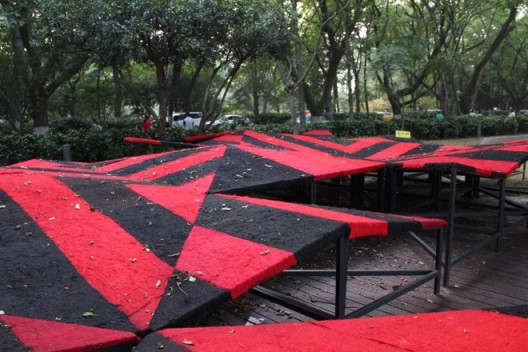
Maddalena Forcella & Santiago Borja, “Broken Landscape”, wool textile, plywood, metal structure, 2016. Image courtesy of the artist
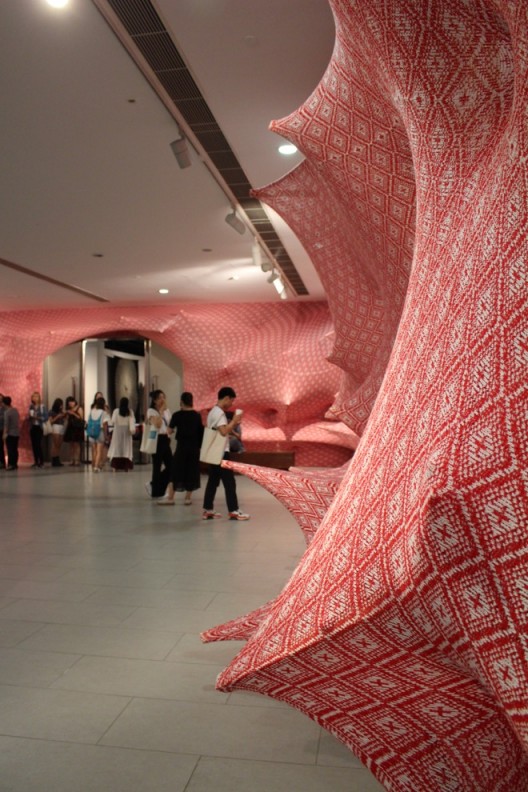
Jeremy Gobe, “Freedom Leading the Wool”, wood structure, metal poles, wool-knitted, woven, 2016. Image courtesy of the artist
,摄影,-18×14cm,2013-528x394.jpg)
Janis Jeffries, “Weaving&We: Hangzhou Textile Factories”. photograph, 2013. Image courtesy of the artist
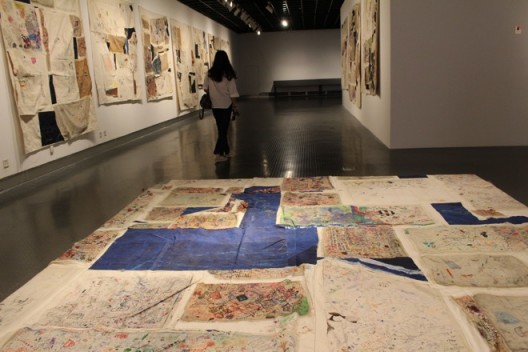
Oscar Murillo, “Frequencies” (ongoing), linen. Image courtesy of Frequencies Projects Foundations and David Zwirner Gallery
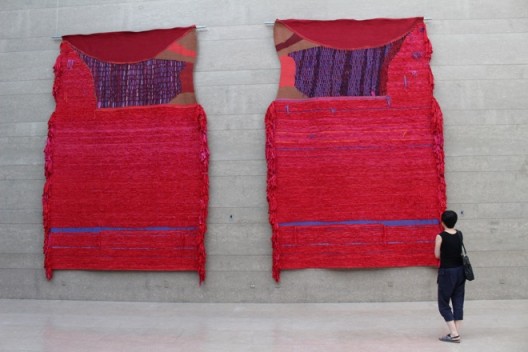
Sheila Hicks,”Conversation – EastWest & WestEast” (original design made by Hicks in France and India, 1973), cotton, ramie, silk, 2016. Image courtesy of the artist and Stadelijk Museum, Amsterdam Holland
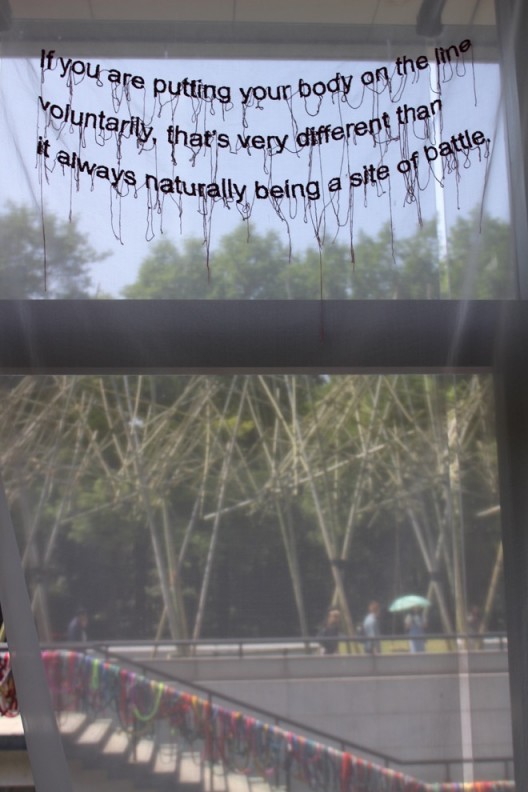
Tali Weinberg, “Bodies on the Line”, silk threads dyed with cochineal and iron and hand-stitched on silk organza, 2013-2016. Image courtesy of the artist

,摄影,-18×14cm,2013-245x245.jpg)
